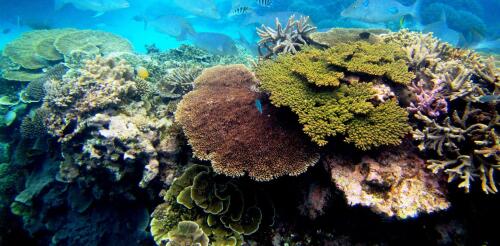Marine biology
There are more than 500 species of sharks in the world’s oceans, from the 7-inch dwarf lantern shark to whale sharks that can grow to over 35 feet long. They’re found from polar waters to the equator, at the water’s surface and miles deep, in the open ocean, along coasts and even in some coastal rivers. With such diversity, it’s no surprise that sharks serve many ecological functions. For example, the largest individuals of some big predatory species, such as tiger and white sharks, can have an oversized role in maintaining balances among species. They do this by feeding on prey and sometimes by just being present and scary enough that prey species change their habits and locations. In a newly published study, colleagues and I surveyed decades of research on sharks’ ecological roles and considered their future in oceans dominated by people. We found that because sharks play such diverse and sometimes important functions in maintaining healthy ocean...
Humans have long been fascinated by organisms that can produce light. Aristotle, who was a scientist as well as a philosopher, wrote the first detailed descriptions of what he called “cold light” more than 2,000 years ago. More recently, pioneering researchers like World War II Army veteran Emmett Chappelle and deep submergence vehicle pilot Edith Widder advanced the study of this phenomenon with novel technologies. At least 94 living organisms produce their own light through a chemical reaction inside their bodies – an ability called bioluminescence. Examples include luminous fireflies, algae that create “glow-in-the-dark” bays, small crustaceans with intricate courtship displays, and deep-sea fish and coral. Yet despite its widespread occurrence, scientists don’t yet know when or where it first emerged, or its original function. As marine biologists who specialize in deep-sea habitats, we know that bioluminescence is particularly common i...
Coral reefs are some of the oldest, most diverse ecosystems on Earth, and among the most valuable. They nurture 25% of all ocean life, protect coasts from storms and add billions of dollars yearly to the global economy through their influences on fisheries, new pharmaceuticals, tourism and recreation. Today, the world’s coral reefs are degrading at unprecedented rates due to pollution, overfishing and destructive forestry and mining practices on land. Climate change driven by human activities is warming and acidifying the ocean, triggering what could be the largest coral bleaching event on record. Under these combined pressures, scientists project that most corals could go extinct within a few generations. I am a marine biologist at the Smithsonian’s National Zoo and Conservation Biology Institute. For 17 years, I have worked with colleagues to create a global science program called the Reef Recovery Initiative that aims to help save coral reefs by using the scienc...
It sounds like a crime show episode at sea: In late January 2024, federal regulators learned that a dead female North Atlantic right whale had been sighted near Martha’s Vineyard, Massachusetts. The whale was towed to shore, where more than 20 U.S. and Canadian scientists converged to perform a necropsy, or animal autopsy. On Feb. 14, the U.S. National Oceanic and Atmospheric Administration announced that the whale was #5120 in a catalog that tracks individual right whales. Further, the agency said, rope that had been deeply embedded in the whale’s tail had likely come from lobster fishing gear in Maine. Entanglement in fishing gear is a deadly threat to these critically endangered animals. Scientists estimate that before commercial whaling scaled up in the 18th and 19th centuries, there may have been as many as 10,000 North Atlantic right whales. Today, fewer than 360 individuals remain. Almost 90% of them have been entangled at least once. When whales become en...
Human fear of sharks has deep roots. Written works and art from the ancient world contain references to sharks preying on sailors as early as the eighth century B.C.E. Relayed back to land, stories about shark encounters have been embellished and amplified. Together with the fact that from time to time – very rarely – sharks bite humans, people have been primed for centuries to imagine terrifying situations at sea. In 1974, Peter Benchley’s bestselling novel “Jaws” fanned this fear into a wildfire that spread around the world. The book sold more than 5 million copies in the U.S. within a year and was quickly followed by Steven Spielberg’s 1975 movie, which became the highest-grossing film in history at that time. Virtually all audiences embraced the idea, depicted vividly in the movie and its sequels, that sharks were malevolent, vindictive creatures that prowled coastal waters seeking to feed on unsuspecting bathers. But “Jaws”...



